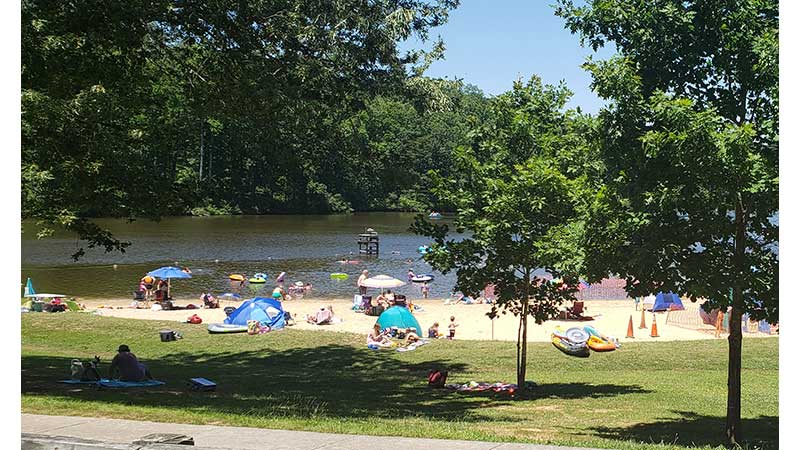Happy to be here: Finding the flowers
Published 2:17 pm Saturday, May 6, 2023
|
Getting your Trinity Audio player ready...
|
In 1955, Pete Seeger wrote a song asking “Where Have All the Flowers Gone?” Additional verses were later added by Joe Hickerson, and the song has been recorded by dozens of artists. I don’t have an answer to the search for peace embedded in the plaintive circling of its verses, but I believe I’ve found the flowers. At least some of them.
All around town, I’ve been watching the expanding palette of color as various flowers have bloomed. First, there were a few hellebores and an occasional crocus. Forsythia opened up. Daffodils raised their trumpets to the spring sun, and tulips weren’t far behind. Smiling pansy faces looked up from many beds. Crabapples, dogwoods, and redbuds burst out in brilliant shows of pink, white, and purple. Indeed, there are few things in nature prettier than Farmville in the spring.
The month of May seems especially linked to this spectacular effusion of flowers. Some sources claim that the month draws its name from Maia, an ancient goddess of spring growth and fertility. The full moon in May is called the Flower Moon (this year, look for it on Friday, May 5). And several observances during the month embrace floral themes, beginning with May Day festivities that traditionally featured gathering flowers, crowning the May Queen, and dancing around a maypole.
Flowers are one of the traditional gifts given on Mother’s Day, the second Sunday in May (this year, May 14). May 15 has apparently been named “Bring Flowers to Someone Day.” May 19 has been designated “Plant Something Day,” but let’s hope its observers don’t wait until “National Water a Flower Day” (May 30) to give those new plants a drink.
Joining the festive mood, the National Wildlife Federation designated May as “Gardening for Wildlife Month.” The idea behind it is to use outdoor spaces to experience nature and provide habitat improvements for wildlife. I appear to be well on my way to excellence in this endeavor. When a delicate crocus in my yard started to lift its purple head, a rabbit promptly ate it. The rabbit and her brothers also tasted all the emerging stems and leaves of my hyacinths and tulips. None of my emerging sprouts survived the nibbling to produce a bloom. What the rabbits left, the deer ate, including to my surprise, thorny knockout roses. My garden is a veritable wildlife buffet.
When it comes to viewing lovely flowers, I expect to have better personal luck with National Public Gardens Days. This observance, which encourages viewing flowers that have been supervised by professionals, was established more than a decade ago by the American Public Gardens Association to promote awareness of botanical gardens, arboreta, and other places where people can enjoy and learn about plants. It officially begins on the Friday before Mother’s Day and runs through the Sunday after (May 12 to 21 this year). According to the APGA website, some of the closest public gardens include the Lewis Ginter Botanical Garden in Richmond, the Quarry Gardens in Schuyler (west of Scottsville), the grounds at Monticello in Charlottesville, and the Edith J. Carrier Arboretum at James Madison University in Harrisonburg.
Those certainly sound like wonderful destinations, but I’ve also discovered some beautiful spots closer to home. One involves a short stroll starting from Main Street at the intersection of High Bridge Trail State Park. The plaza area features flower-filled planters, and there are plant beds by the Caboose and the Farmville Community Marketplace.
Longwood University’s Brock Commons provides another enjoyable walkway. Bordered with some magnificent trees and sprawling lawns, it features several displays of flowers and blooming shrubs. A few fountains add a playful ambiance.
For a short walk among trees and wildflowers, there’s the Dogwood Trail that connects High Street with the parking area behind Centra Southside Community Hospital. The Sarah Terry Walking Trail is a longer loop. It circles Wilck’s Lake. In addition to trees, it features birdsong, water views, and turtles basking in the sun.
So many things can make the world seem bleak. A long winter, a bewildering challenge, even the daily news. When it seems like the flowers have all gone, finding them again stirs new hope.
Karen Bellenir has been writing for The Farmville Herald since 2009. Her book, Happy to Be Here: A Transplant Takes Root in Farmville, Virginia features a compilation of her columns. It is available from PierPress.com. You can contact Karen at kbellenir@PierPress.com.





